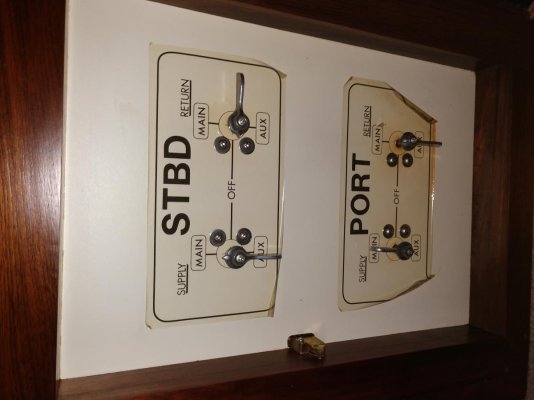May I ask...
-- What is the size of each of your tanks? Either absolute, or relative to each other?
-- Where is each located?
Depending upon where they are located, you might be able to access the sender and look down into the tank or, even better, drop a yard stick in. My current boat has working gauges -- but I've still got the old owner's measuring stick! Those senders are usually really easy to remove and reinstall. Mine took seconds and a phillips head
As I understand it, many of these boats never had real manuals. It just wasn't something that they seem to have always done. It may have been because the model, at least for a good while, was for Marshall to rough in the boats, send them to the dealers, and let the dealers finish them from there. On one of these forums I remember someone seemingly knowledgeable saying that Marshall didn't do them for years, then did them for a little while, then stopped again. In 1987, the Californian line changed hands from Wellcraft to Marshall to Carver, so I wouldn't want to speculate about what did or didn't exist. I can just say that, personally, I haven't seen any 1980s era manuals floating around. I would have grabbed them, just for any bits applicabale to mine.
The upshot is, that we may just need to work though this, collecting as much information as we can, and then testing some theories with the gauges or measuring stick.
In my old 1977 42' Californian, I could easily trace the hoses from the laz in the back, along the sizes of the aft stateroom under the cabinets, and into the engine room. I did it as one person, but it would have been easier with a second to wiggle hoses.
In my newly purchased boat, a 1981 42' Hardin trawler, I have saddle tanks on the sides in the engine room. I'll rant about how much space is wasted in the back of the boat by not having them there and how much more difficult they make working on the engines -- in some other forum at some other time. I only mention them because my gauges didn't work and I didn't understand my own valves...and I had to trace everything.
Once I did, it all made sense and is nice. I fixed a couple of minor leaks at fittings along the way. Got the gauges working (just wire disconnected). And, life is good. It wasn't my most favorite day squirming through my much-shorter-than-yours engine room. But, it was totally worth it.
At any rate, if you can, let us know what you know about the sizes and locations of the tanks, and if you do physically look at the levels, what you find. And, we can try to help you puzzle through. Maybe we can then even make a diagram to post here for posterity.


